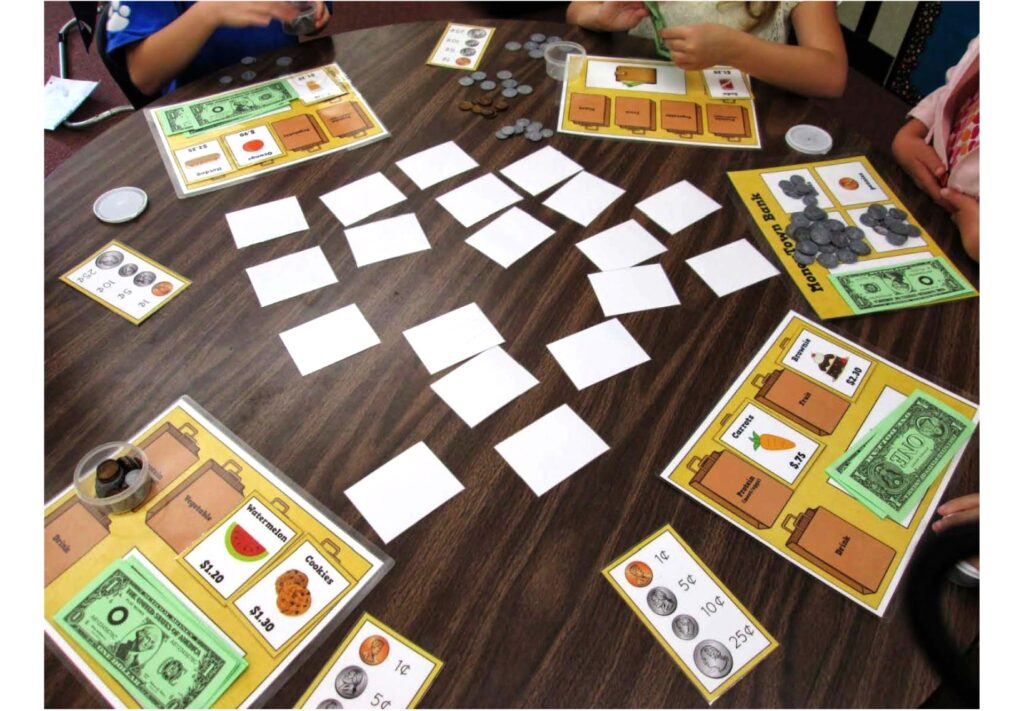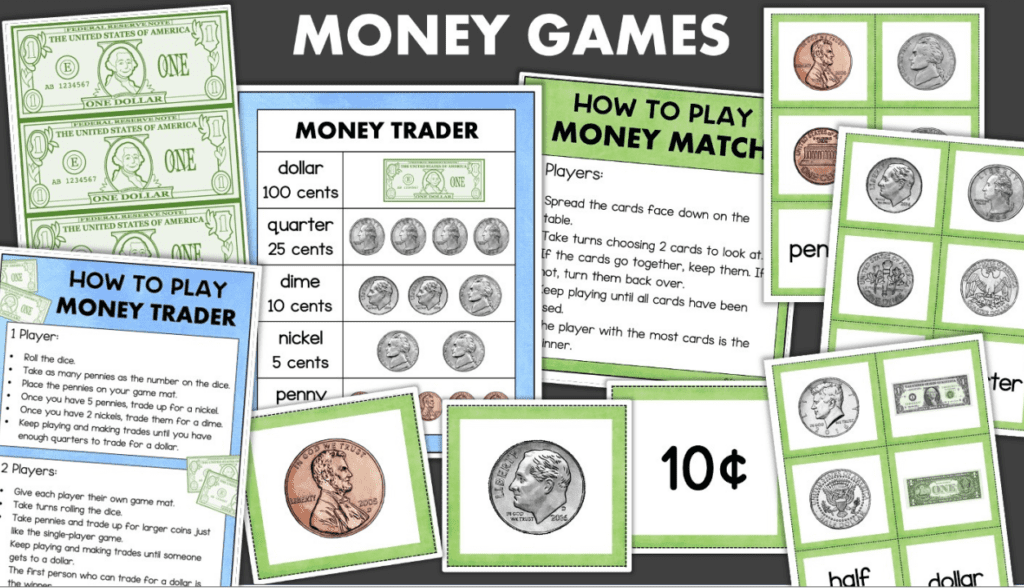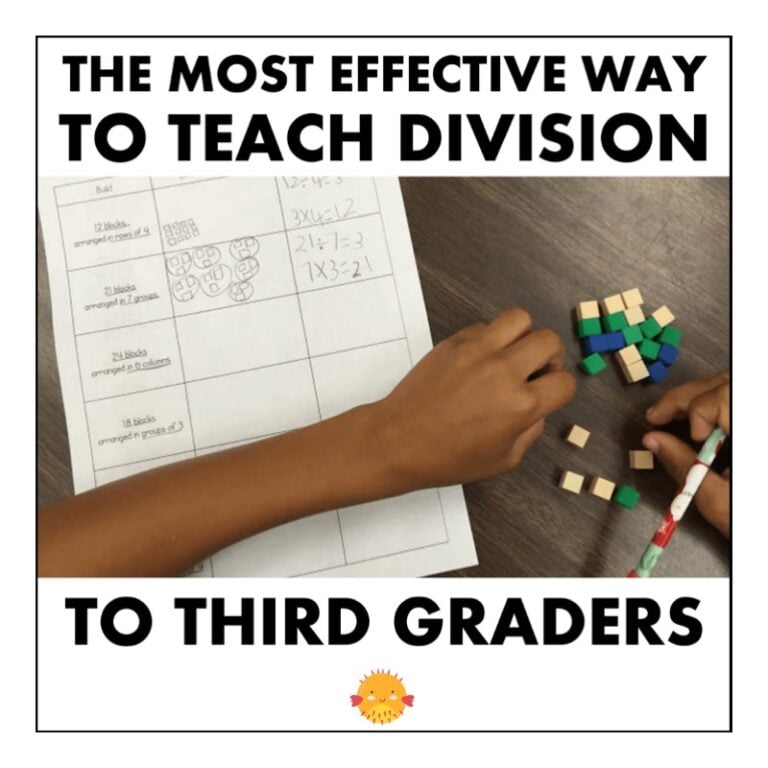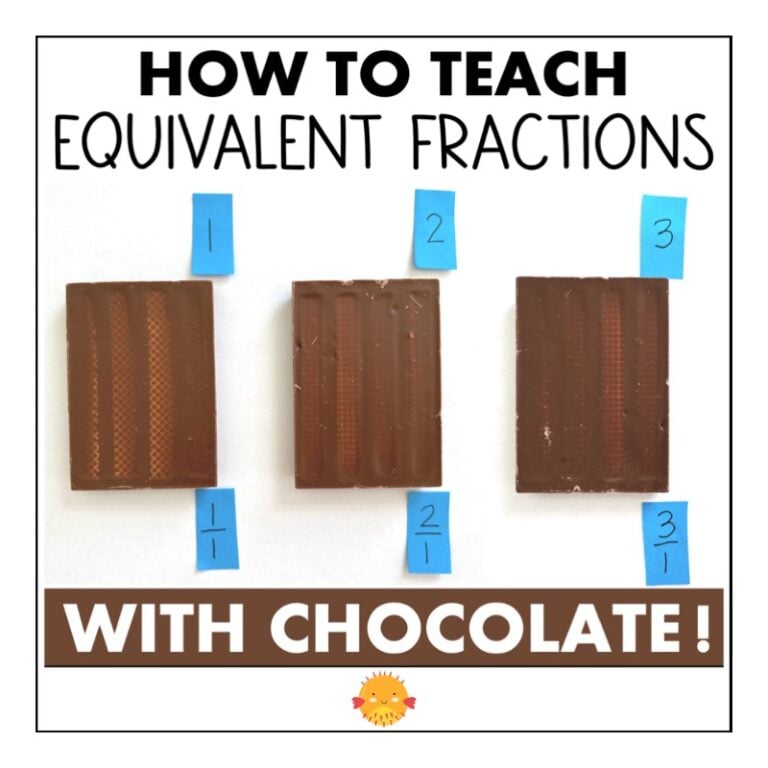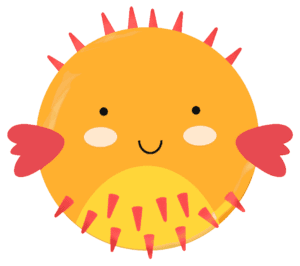
Fun Activities to Teach Counting Money to Kids
One of my very favorite math skills to teach is also an essential life skill – how to count money! One reason I really enjoy this topic is because the kids are genuinely excited to learn it. It’s something young children see adults doing out in the real world and they want to do it too!
In this blog post, I’ll share some of my favorite fun activities to teach counting money.
Money concepts are typically taught as part of the math curriculum in first grade and second grade. Younger students are usually very motivated because they know these new skills can be used in real life. Understanding how to count money makes them feel so grown up.
.
What is the best way to teach money skills?
You can’t just toss a bunch of different coins on the table and expect your students to start counting them. There are some other things they have to master first:
- coin identification
- the value of each coin
- counting one type of coin
- counting a mix of coins
.
This is the order in which children need to learn money math concepts. Here are some activities to teach counting money that you can include in your money lesson plans.
.
Teaching Money Identification
If your students can’t yet recognize and name each coin, this is where you’ll need to start. Penny, nickel, dime, quarter – they must be able to tell which is which. You might also want to teach the half dollar if it’s part of the curriculum. However, these coins are becoming more and more rare and aren’t often encountered in a real life setting.
Here are some ways you can teach your students how recognize the various coins:
.
Recognizing Coins
I start teaching coin recognition during the whole group lesson portion of math workshop. I do this with a set of large posters that show each coin and its value. They are nice and big so we can study each one and point out all of the little details like what’s pictured on the coin and what words are printed on it. We use a graphic organizer to describe each coin and then compare them.
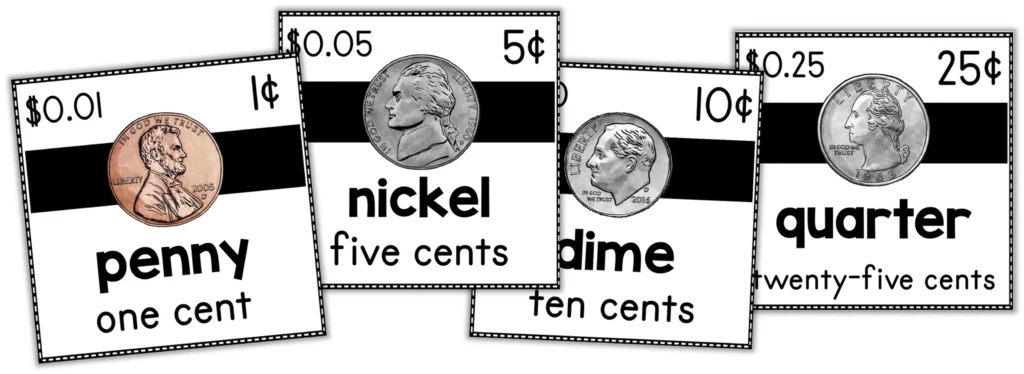
.
Finally, I bring out a set of realistic plastic coins to compare to the posters. It’s important to use play money that is accurate. Otherwise, students will struggle when they see real coins.
.
Coin Detective
This is a simple but really fun activity. You will need a set of magnifying glasses or hand lenses (which might be part of your science kits).
First, line up your coin posters on a table. This is where students will place their coins as they identify them.
Next, give each students (or pair of students if you want them to work together) a small pile of various coins. Make sure they have at least a couple of each coin.
Now, tell students to be detectives and examine their coins using the hand lenses. They should look very closely and study all the details to determine which coin it is.
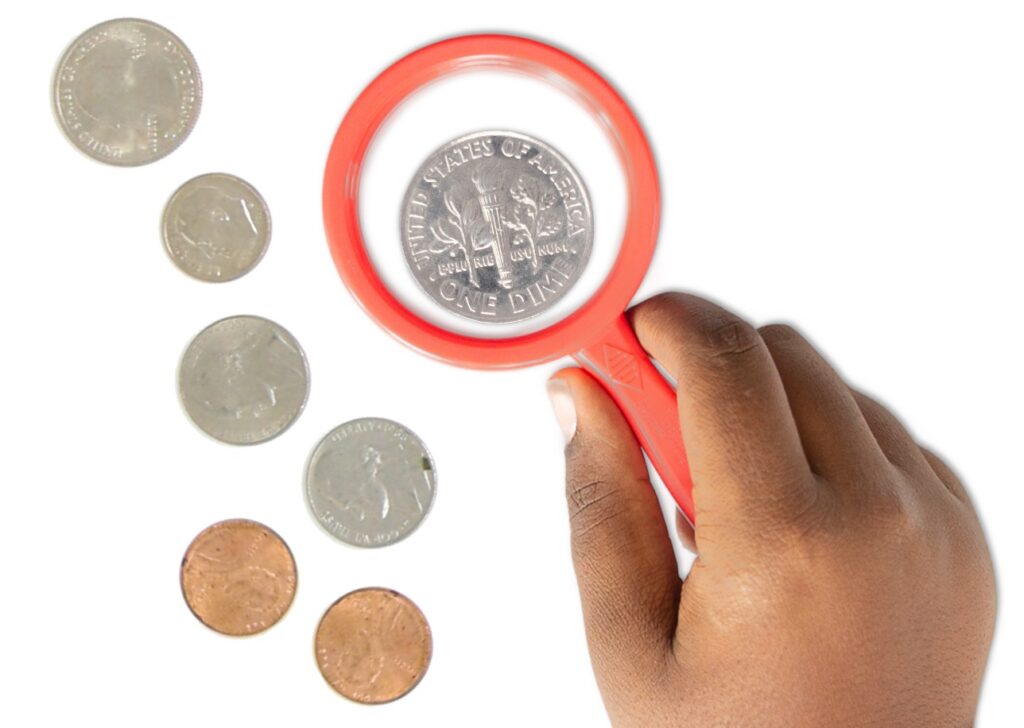
.
.
Once they figure it out, they bring the coin up to your money table and place it underneath the correct poster. They continue doing this until they have identified all the coins in their pile.
.
Coin Match Up
This activity can be used in your math centers or small groups. It consists of a set of money cards showing the front and the back of each coin. Students must match up the cards that belong together.
For example, the card showing the front of a dime should be matched up with the one with the back of a dime. For a little extra challenge, the cards can be place faced down and students can play a memory type game.
I also use a coin matching worksheet for this skill. I can be used for independent practice or an assessment.

This is a simple cut-and-paste worksheet (which builds fine motor skills too).
At the top are the names of each coin. On the bottom are images of the front and back of each coin.
Students cut out the pictures and glue them under the corresponding coin name.
.
Teaching the Value of Money
Now that your students can identify the various coins and tell them apart, the next step is to teach coin values. Kids have to understand that different coins represent different amounts of money – before you can introduce activities to teach counting money.
Here are some great ways to teach the value of coins:
.
Coin Posters
First, go back to your coin posters. Add the value to each one, if it isn’t already printed on them. Hang them in a conspicuous spot where students can refer to them. I talk to my class about which coin has the largest value. We put them in order from least to highest value.
.
Coin Poem
This cute little jingle is a fun way to learn to identify coins and their values. It’s been around for a long time, so you might already know it:
Penny, Penny, Easily spent,
Copper brown and worth one cent.
Nickel, Nickel, Thick and fat,
Worth five cents, I know that!
Dime, Dime, Little and thin,
I remember that you’re worth ten.
Quarter, Quarter, Big and bold,
You’re worth 25 I’m told.
.
I like to teach the poem in whole group and then let students do the worksheet. It’s a great independent practice page because it involves cutting and gluing and helps students associate the picture of each coin with the rhyme that goes with it.
Here are a couple of fun videos that also use rhymes and music to teach this skill (because a fun song always makes learning easier):
.
Coin Value Match Up
This activity is similar to the one described above, but instead of matching the two sides of each coin, students will match them to their values. You can use the same set of cards – some showing the heads side of the coins and some showing the tails side. But you’ll also need a set of cards with values.
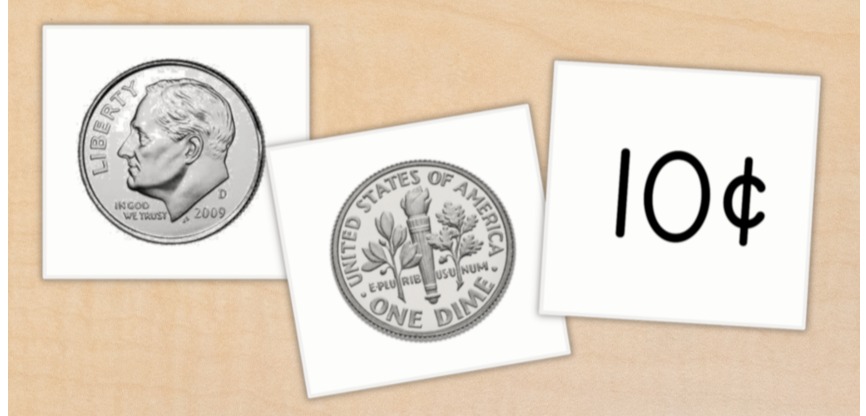
.
Snack Shack
One of my students’ favorite money activities is our class Snack Shack. It’s a very fun, hands-on way to learn about money.
I start by bringing in some small paper plates and a few treats like crackers, fruits, sliced cheese, or baby carrots (Choose whatever your students like). I put each snack item on its own plate and label it with a price. One item will cost 1¢, another 5¢, another 10¢, and the last 25¢.
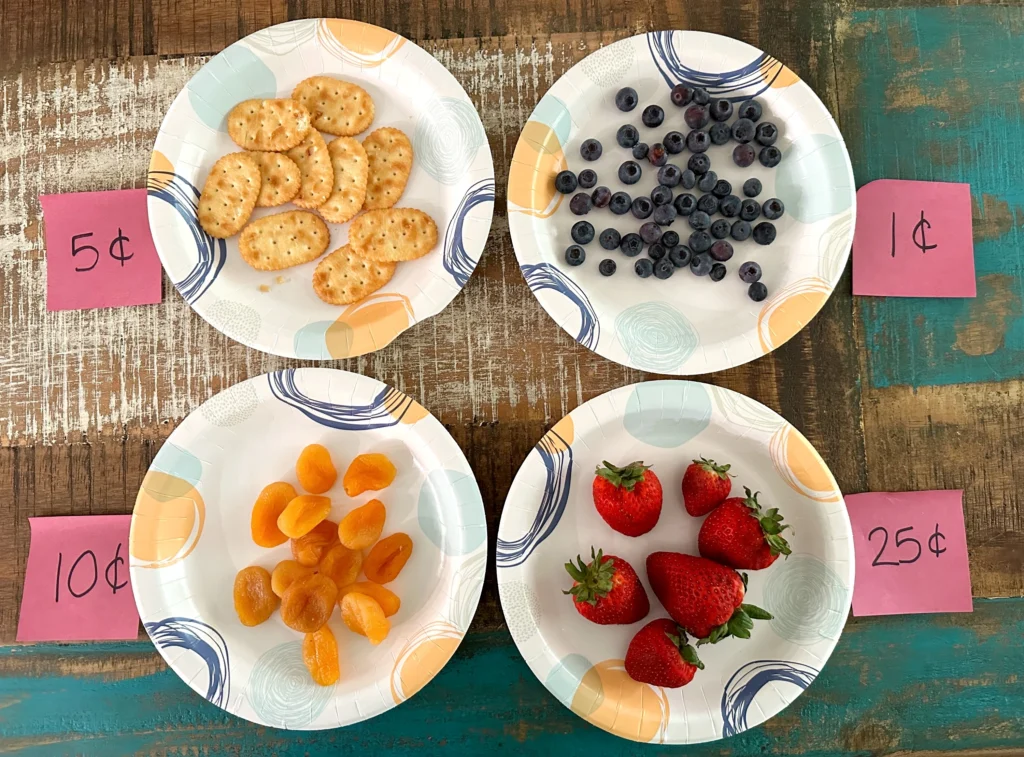
.
I give each students four coins – one of each type. Then, they get to come up and buy their snacks.
This is strictly so they can practice matching each price with the coin of that value. This is not the time for making change or anything like that. They may buy one of each item by giving me the right coin. There is only one correct answer, so it’s a pretty simple activity. But the kids really love it!
.
Activities to Teach Counting Money
Once your class can name each coin and how much it represents, it’s time to get serious and plan activities to teach counting money!
But first, it would be wise to make sure your students can skip count by 5s and 10s. Why? Skip counting is the easiest way to count a pile of nickels or dimes. Without this skill, counting coins becomes a MUCH harder task.
.
Part 1 – Counting Like Coins
The first step is to teach students to count one type of coin at a time. Obviously, pennies are the easiest. Give students a small stack of them and ask them how much money it is. All they have to do is count by ones.
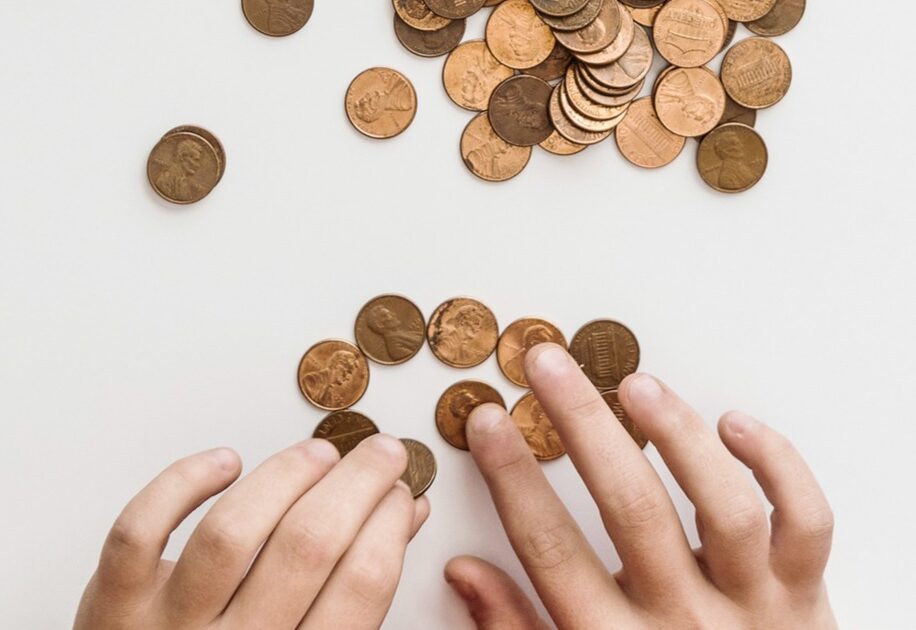
.
When everyone is able to do this, move on to dimes. Why not nickels? Because counting by tens is easier than counting by fives. Practice counting dimes together all the way up to 100. They don’t need to know that 10 dimes or 100 cents is the same as a dollar at this point. Next, you’ll do the same with nickels and quarters. Again, don’t go past 100.
I do a lot of this hands-on practice in my guided math groups. It lets me keep an eye on who gets it and who needs extra support. I follow up with independent practice in math centers.
.
Muffin Tin Coin Counting Center
You can find plenty of free math worksheets online for this skill but here’s an activity that your students will like a whole lot more. All you need is a muffin tin and a set of coins.
First, decide which coin you want students to practice with. Then, label each compartment in the muffin tin with an amount that students need to count out. Colored dot stickers work great for this.
Here is how the muffin tin might look to practice counting nickels:
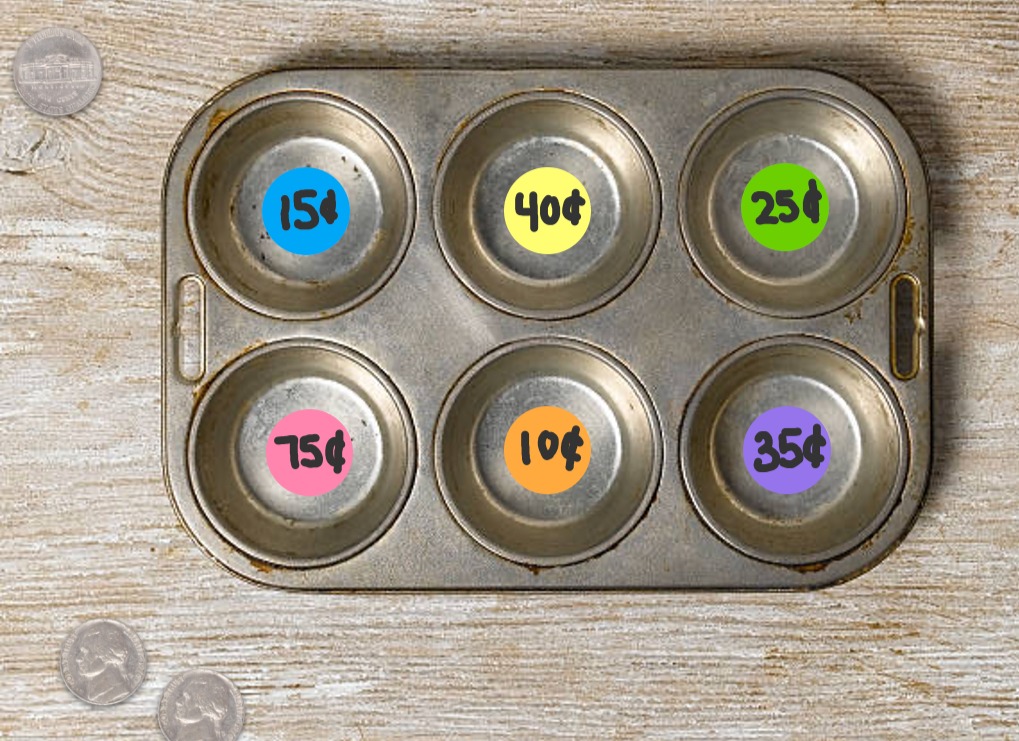
.
Students fill each compartment with the number of nickels needed to equal that amount of money. If you have several muffin tins (Goodwill is a great source), you can make one for each type of coin.
When the students finally have the hang of counting each kind of coin in isolation, you can give them different coins to work with. Have them sort the coins into piles with all the pennies together, nickels together, etc. and then count each pile.
I give students a piece of paper to record how many of each coin they have and what the total value is.
.
Part 2 – Counting Mixed Coins
So far, all of these activities and lessons have been laying the groundwork for the real task – counting different combinations of coins to find the total amount of money. This is a big moment! Your students are about to learn an incredibly important skill that will serve them the rest of their lives!
This part of our money unit is always really fun! There are so many great math games and activities to teach counting money.
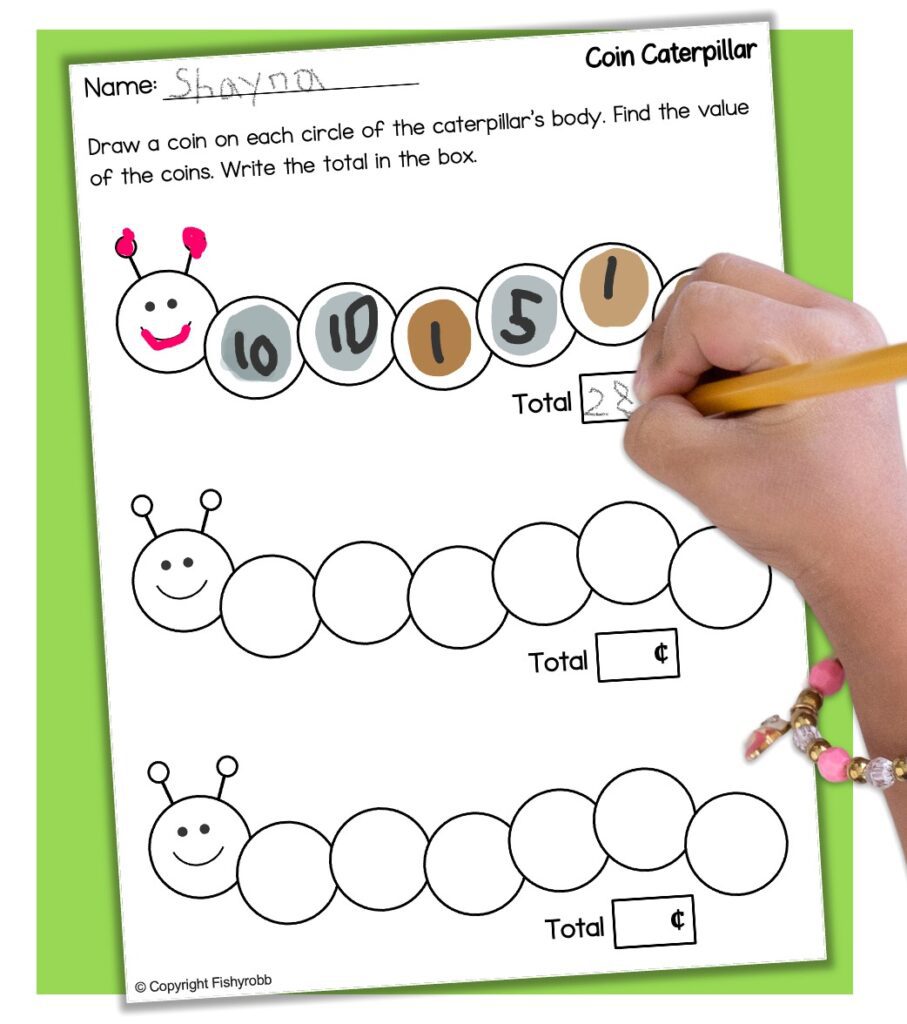
Coin Caterpillars
This is a cute little coloring activity for counting mixed sets of coins. All you need to do is print out enough copies of this coin caterpillar worksheet for your whole class.
Students draw a coin on each segment of the caterpillar’s body and then count up how much their caterpillar is worth. They don’t need to be great artists. A gray circle with a 10 on it is clearly a dime.
.
Class Store
One of my clearest memories from elementary school is of shopping for groceries with play money.
My 2nd grade teacher, Mrs. Conaway, asked everyone to bring in empty food packages – cereal boxes, milk cartons, soup cans, etc. Then, she used them to set up a little grocery store in our room with price tags and a little cash register. We all got a little bag full of plastic coins to go shopping with and practice counting money.
It was the highlight of my year. I literally remember it almost 45 years later!
You can certainly duplicate this activity in your classroom. Just make sure all of the food packages are completely clean and dry. You don’t want to attract bugs!
Instead of doing this, I have chosen to use a game with a similar concept. There are a lot of money games for kids and they are a great way to build math skills. This one, called The Grocery Game, is my class’ favorite! (They even ask to play it during inside recess.)
.
.
The objective is to buy an item to fill each of your grocery bags without running out of money. Up to four students can play at a time, plus someone can be the banker to collect all the money.
This is one of the best activities to teach counting money because it’s so easy to differentiate. You can change the prices on each item to make them even amounts, or you can increase the difficulty and have the banker give players the correct change for each purchase they make.
.
Counting Money Apps
There are a lot of free apps that teach money skills, but my favorite is Peter Pig’s Money Counter. It includes 3 different games that teach students to identify coins, count money, and compare the value of coins. Each correct answer earns virtual money to either save or spend on accessories for Peter Pig. This game is available through the App Store or Google Play.
.
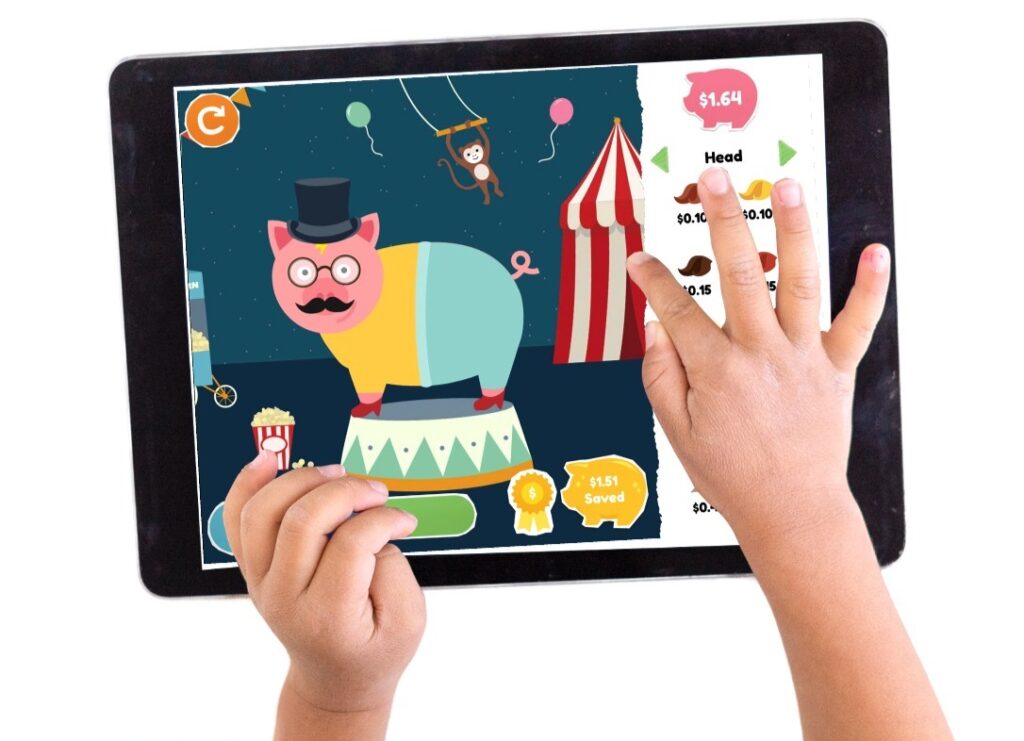
.
There are so many different ways and activities to teach counting money and most of them are really quite fun! I hope this blog post has given you some good ideas to get started.
Need printable money to use with your math lessons? I’ve got you covered! Free Printable Play Money Template for the Classroom
.
.
Counting money is a skill that needs repetitive practice to master. This Money Bingo Game is a fun way to incorporate that into your money lessons:


